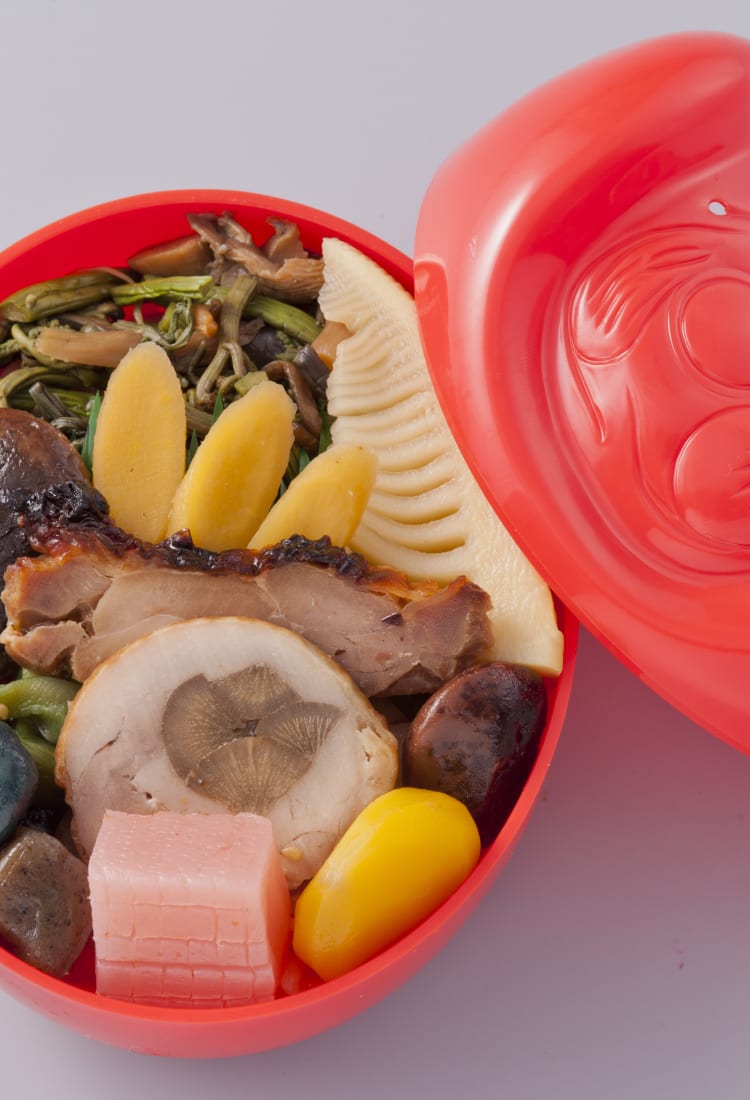

REISEFÜHRER Experience Japan's Local Ekiben Culture Ekiben make fast, easy and delicious meal options when traveling
Sample the region's best food as you travel through Japan's ekiben
Japan is stitched together by a vast network of ultra-modern high-speed trains and well maintained local trains. Train travel paired with Japan's regionalized cuisine has created an entirely new food culture in the form of ekiben, boxed meals made for on-the-go eating. With countless varieties and innovative packaging, eating ekiben on a train journey is an authentically Japanese experience.
In 1872 the first railway opened in Japan, connecting Shimbashi in Tokyo with Yokohama. It caught on fast. Suddenly everyone was a commuter. Vendors selling pre-made lunches packed in wooden boxes would walk alongside crowded trains before departure. Whenever a train line opened in a new city, a new, regional ekiben would soon follow. As the popularity of train travel exploded across the country, so did the popularity and variety of ekiben. Since high-speed bullet trains were still a ways off, train travel required time, and lots of it. Long journeys meant long gaps between meals, so ekiben was a solution to Japan's growing number of hungry train travelers. Buying a bento box from a station before embarking on a train journey remains one of the ultimate Japan experiences.

Train travel in Japan opens up a new world of culinary experiences
Japan's geography ensures highly regionalized cuisine. Railroads were introduced to Japan before the refrigerator. Therefore, ekiben were made using the freshest, local ingredients. Today's ekiben makers have kept this tradition, and sampling the best local cuisine is part of the fun of train travel in Japan. Visitors to Kyoto Station will find a wide variety of Kyoto staples such as sushi wrapped in tofu skin or peppercorn rice. Tokyo Station, one of Japan's busiest transport hubs, has a collection of regional ekiben from all across Japan. Deciding which ekiben to try is possibly one of the more challenging aspects of train travel in Japan!
Japanese trains may be modern, but they don't come with built-in microwaves—however, some ekiben do. The Gokusen Charcoal Grilled Beef Tongue from Miyagi Prefecture has a small heating pouch in the base. Simply pull the string and wait a few minutes while your bento box heats itself.
Ekiben are pre-packaged with everything you will need to eat them. Once seated, unwrap your bento and enjoy your meal as the Japanese countryside passes by your train window—perhaps even passing through the same fields where the rice in your ekiben was grown.
Larger stations have numerous shops selling ekiben from several regions. Smaller stations will have a selection of local specialties, usually sold from a glass cabinet or a nearby counter that you will pass on your way to the train platform. You may not be able to see inside pre-packaged ekiben, but there are usually photos nearby displaying the contents. Prices can vary from under 1,000 yen for a simple meal of rice, local vegetables and a main dish to around 3,000 yen for gourmet ekiben featuring Wagyu beef.
Some chefs have taken the tradition of localized ekiben even further by using local ingredients. These packages pay homage to their regional roots and also serve as souvenirs for visitors to these regions. From practical to wacky, there is a style of ekiben for everyone.

Moo Taro Bento Mie
Beef fans visiting Mie should try the Moo Taro Bento. This meal of premium Japanese beef, rice and vegetables is served in a cow-shaped container that plays music when you open it.

Masu no Sushi Toyama
Visitors to idyllic Toyama should try the Masu No Sushi Ekiben. This highly photogenic cedar container is a definite keepsake. Inside are strips of trout sashimi over Toyama rice tightly wrapped in bamboo leaves. Rice farmers have eaten this form of sushi for a thousand years.


Daruma Bento Gunma
The Daruma is a symbol of Gunma Prefecture. The traditional, hollow, Japanese doll is modelled after the founder of Zen Buddhism and represents good luck. The Daruma Bento is filled with rice, chicken and local Gunma vegetables. The container is built to function as a piggy bank after you've finished your meal.

Hipparidako Meshi Nishi Akashi
Nishi Akashi in Hyogo Prefecture is famous for its octopus. The Hipparidako Meshi comes in a clay pot resembling the same pots used to catch octopus in the waters around Nishi Akashi. Inside you will find a visually striking meal of rice cooked with Akashi octopus and other local favorites like bamboo sprouts and shiitake mushrooms.

Kaisen Ezo Shomi Sapporo
Japan's northern region of Hokkaido is home to some of Japan's most famous seafood. Experience Hokkaido's best in one luxurious ekiben. Inside you'll find a bed of sushi rice with a light vinegar taste topped with Hokkaido salmon, salmon roe, crab, scallops and sea urchin.
Ekiben typically features beef, pork or fish as a main dish, with local vegetables and rice on the side, meaning it can be challenging to find vegetarian, vegan or gluten-free ekiben. Larger stations, such as Tokyo Station do feature several vegetarian and vegan alternatives—keep an eye out for the aptly named Vegetable Bento at Tokyo Station. The box is marked with easy to understand pictograms indicating the ekiben doesn't contain meat, fish, egg or dairy. The Vegetable Bento features a medley of seasonal vegetables from around the Kanto region served over two types of rice. Gluten-free options are a rarity in Japan. If you're looking for gluten-free ekiben be very careful as most ekiben involve a dish that was cooked with soy sauce, particularly the vegetables.
Take care when eating and drinking on trains in Japan. On long haul express trains such as the shinkansen or other super express trains, eating and drinking is acceptable and many services provide train attendants passing through with carts laden with ekiben and beverages. However, short distance local trains are not the appropriate place for a meal and are not set up with spaces that lend themselves to eating. However, on rare occasions you will see people drinking water, tea and even alcohol on local trains. Be mindful though, as local trains can become extremely crowded and it is considered good form to take up as little space as possible and not risk spilling a drink on a fellow commuter.
The latest information may differ, so please check the official website








































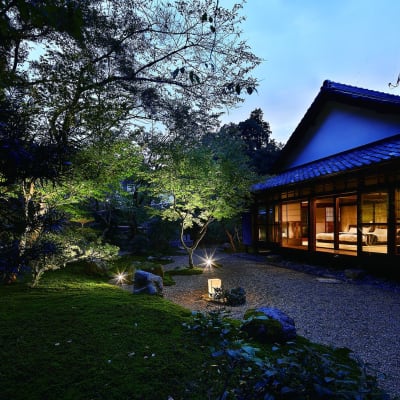
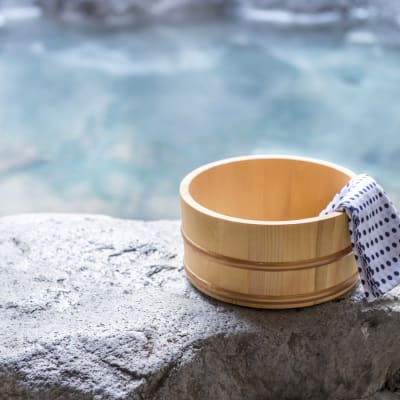


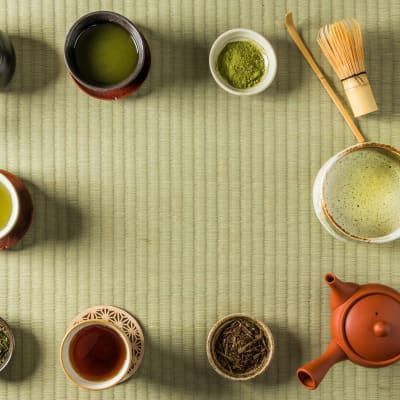
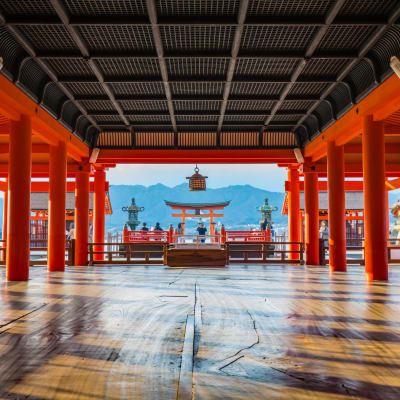
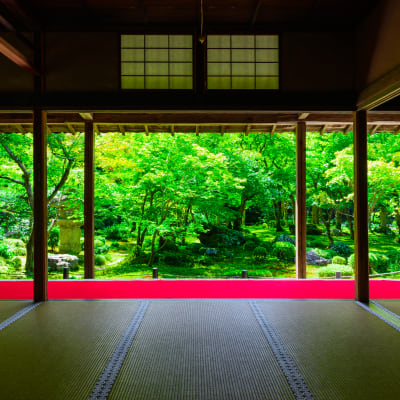

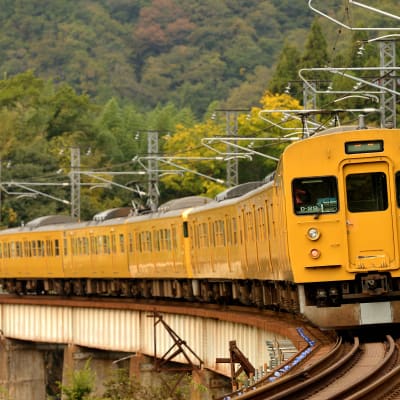



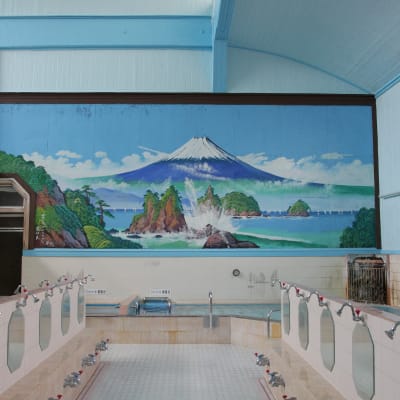




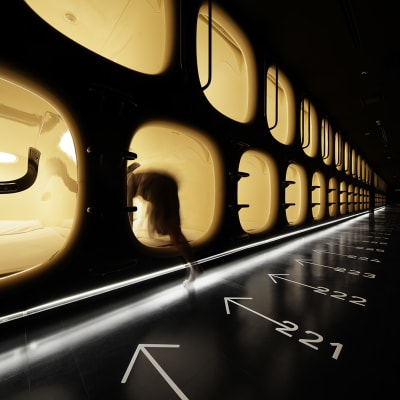






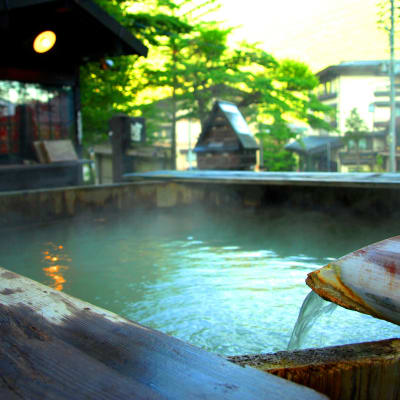
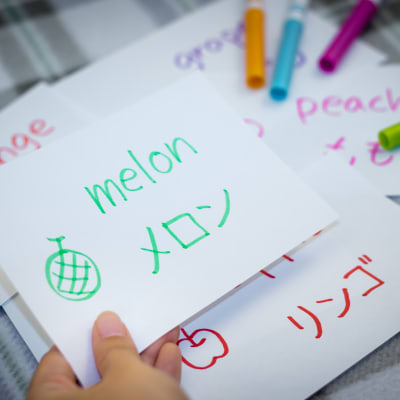



![Kengo Kuma and Japan's New Architecture [PR]](https://res-3.cloudinary.com/jnto/image/upload/w_400,h_400,c_fill,f_auto,fl_lossy,q_auto/v1584347275/story_guide/Sg109_02)
![The Art of Kimono [PR]](https://res-4.cloudinary.com/jnto/image/upload/w_400,h_400,c_fill,f_auto,fl_lossy,q_auto/v1585275405/story_guide/Sg110_main_latest)






